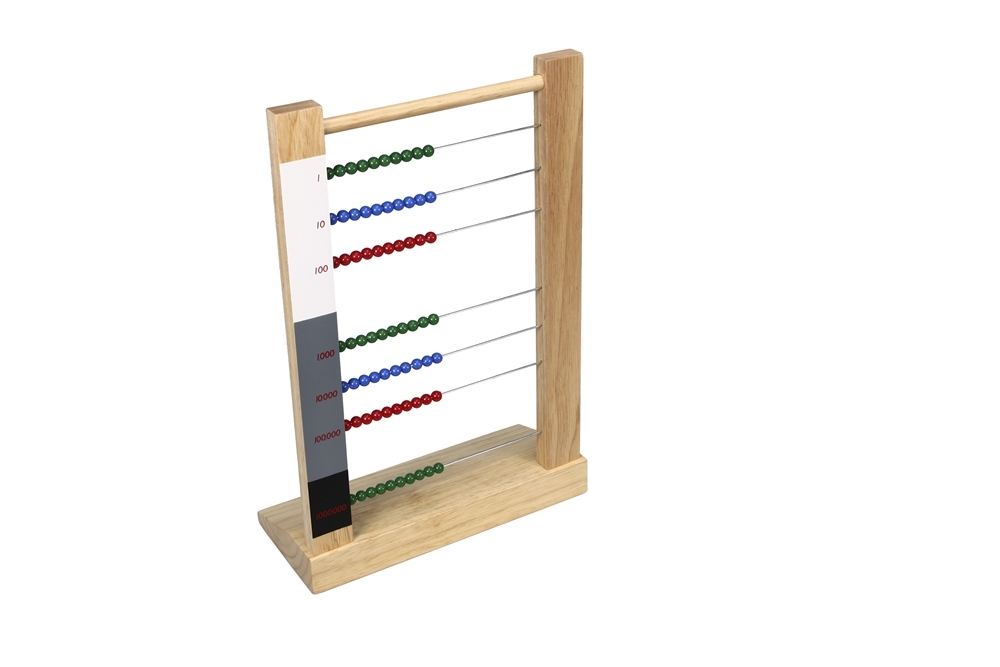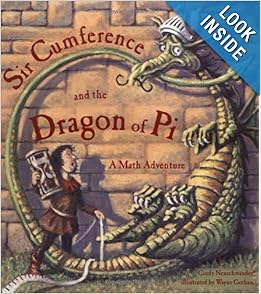You can purchase this material, it is a fairly inexpensive piece of Montessori equipment. I purchased one (along with a large order of other defective materials) and it arrived with a missing bead. We needed it right away and I didn't really have the time to wait to buy a new one (and pay shipping costs). This material was actually pretty easy to make with materials we already had on hand. Its not as nice as the real thing but it didn't cost much and we had it made in about 20mins. T helped me make this material as well. We used some disposable chopsticks that we kept from take out, I hot glued them together to make the frame. We used pipe cleaners for the wires, they don't move as easily as they could but its not too difficult. If you have plain wire it would probably work better. I saw somewhere that someone put stir stick straws over pipe cleaner to make them slide easier (sorry i can't remember where I read it to give credit), I didn't have it on hand so we skipped that. The beads are just regular plastic pony beads. I painted the colors on the left side, which is two chopsticks glued together. The number labels are just card stock with sharpie.
When introducing the child to the large bead frame, they are normally a bit younger than T. We didn't have one so I skipped ahead to some of the more complex math with materials we had. This caused a small problem for T in that normally you would start with addition on the large bead frame before starting multiplication. T had already been working on addition for so long that he could do it on paper with no materials into the billions and then the trillions. He was so excited about doing addition and subtraction into the trillions and then it occurred to him that it really isn't any harder because its just adding digits. He was so proud of himself, even though he said it was easy.
 |
| This was his work the day before we introduced the large bead frame |
We really didn't have any further to go with addition and subtraction at this point and we really needed to move on to multiplication past the memorization work that he has done. He really enjoyed building numbers on the large bead frame. I would read a number aloud to him and he would build it on the large bead frame. He thought it seemed very much like a secret code. It was fun until I wanted him to try addition on the bead frame. Since he could already do addition (and subtraction) so easily without the aid of any materials, he found the large bead frame to be tedious. Those of you with Montessori students probably understand what I mean by this. Montessori students are not made to do busy work. They want to do work that is challenging. It was like I was forcing him to take a step back in his math progress and he was not having it. I got some great advice from some other Montessori homeschooling moms and we just built numbers long enough for him to understand how the bead frame worked and then jumped into multiplication. It worked great!
We started with short multiplication to get the hang of how to use the large bead frame paper. We used the free download of this paper at Livable Learning. It works wonderfully, the only part I dislike is that we can only do about 3 problems of short multiplication, which means probably only 1 in long multiplication.
At the top of the page there are two main columns. The left side is for the problem to be written, the right side is for the break down. Within each column are colored columns separating each place value. T selected his own problems.
Here is a closer look as an example:
On the left the problem is 6352x9. On the right we break it down into 2 units, 5 tens (50), 3 hundreds (300) and 6 thousands (6000) all multiplied by 9. The child then multiplies 9x2 in their head and moves 8 unit beads and 1 ten bead over on the bead frame (they can also count the beads and do an exchange if they can't do the simple multiplication in their head). The next problem would be 9x5 and the child would move 5 ten beads and 4 hundred beads (9x50=450). Then 9x3 and move 7 hundred beads and 2 thousand beads (9x300=2700) but there is an exchange because there were already 4 hundred beads before adding 7 hundred beads so one bead would be left in the hundreds row and another thousand bead would be moved over. Finally, 9x6 and move 4 thousand beads and 5 ten thousand beads. This would leave us with 5 ten thousand beads, 7 thousand beads, 1 hundred bead, 6 ten beads and 8 unit beads giving the answer of 57,168. The child would then record the answer below the original problem on the left 6,352x9=57,168. As shown on the bead frame below
We will be moving on to long multiplication this week. Long multiplication works the same way except the multiplier has more than one digit. My advice to anyone wanting to use this material is to start with addition early, before they can do it all on paper. Many Montessori schools introduce this material in the primary class around age 5, some wait until lower elementary around age 6. T is starting multiplication on the large bead frame at an ok age, usually around age 7 (he is nearly 8). Waiting didn't cause much harm since he jumped in without needing addition on this material but he would have been more comfortable using this material had he already used it for addition. If you don't want to buy or spend a lot on this material, it works fine to piece it together with materials you have on hand. Its not as pretty but it does the job just fine.































